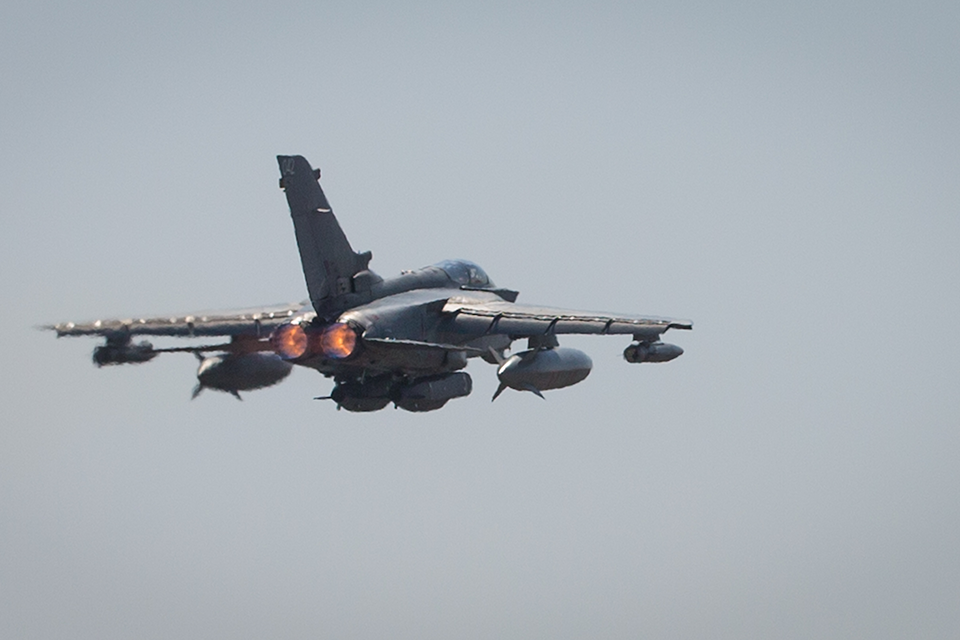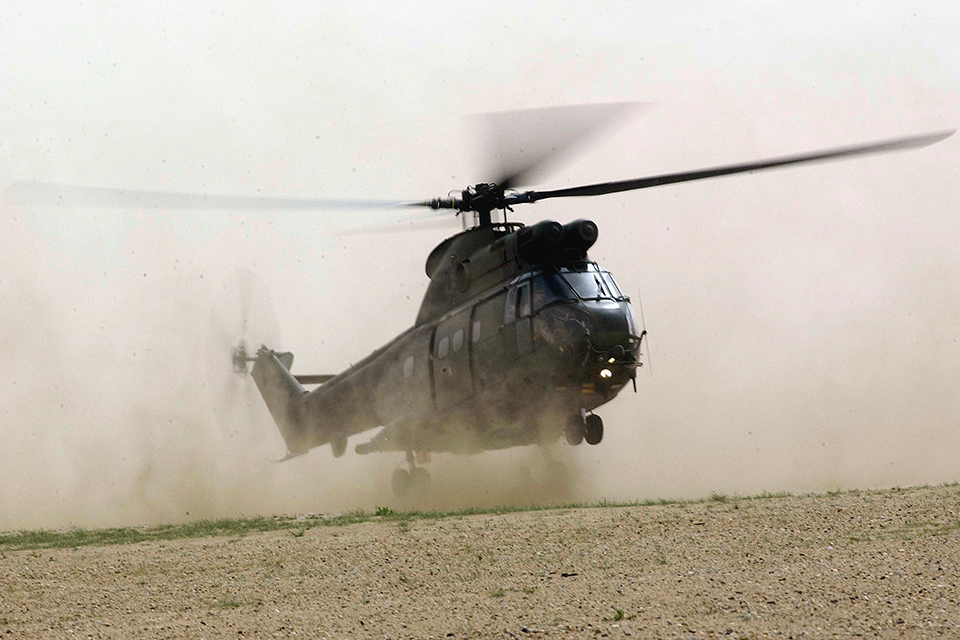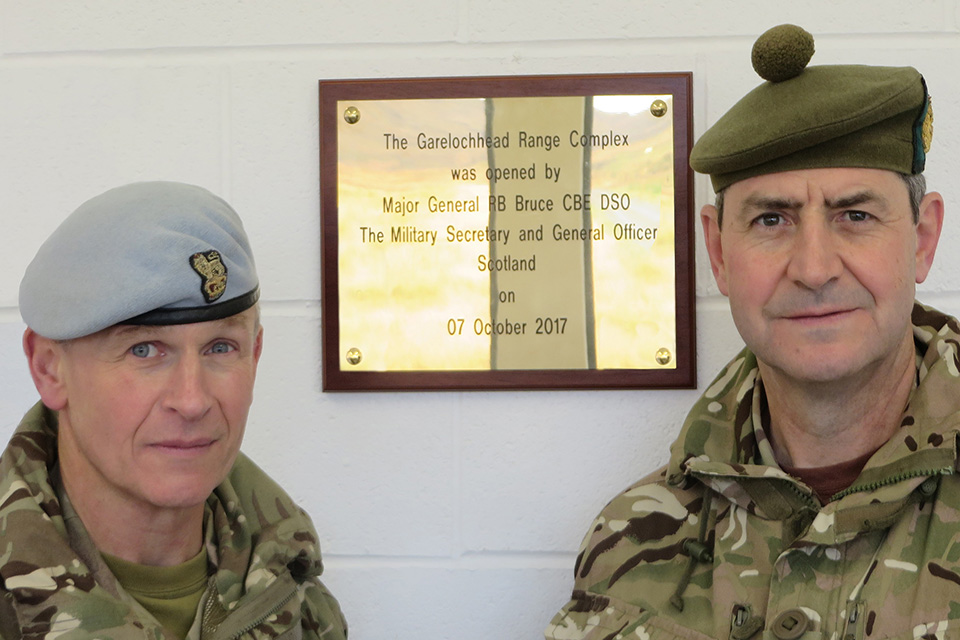It is a pleasure to be here at Wembley for this well timed conference on maintaining advantage in an era of global challenges, the first time in 17 years the annual International Concept Development and Experimentation conference has been hosted by the UK Ministry of Defence.
I would also like to pass on my personal thanks to NATO-ACT and the US Joint Staffs J7 for organising such an important event. I very much look forward to hearing what you have to say.
I’d like to begin by briefly describing the UK view of the strategic context and operating environment. The UK’s future force concept, now the principal defence level guidance for all future force development, foresees a contemporary and future operating environment characterised by complexity, instability, uncertainty and pervasive information.
We face persistent and multi-faceted state on state and non-state competition, and contested access to, and control of, all operating domains. And adversaries, both state and non-state, will threaten the rules based international order.
To the degree that it ever truly existed, the distinction between ‘war and peace’ has blurred. The range, geographic spread, and capabilities of potential adversaries make a distinction between home and overseas operations obsolete.
These are significant developments. Let me give you just 2 examples:
Most of today’s senior defence leadership grew up in the days in which First Hostile Act was a definable moment in space and time that made it, at least in theory, straightforward to distinguish between peace and war. But in today’s era of constant competition, and in particular of information operations and cyber, how would we know that the First Hostile Act hasn’t already happened?
We entrust a deployed commander in a theatre of operations with the responsibility of the protection of his force, we think of and manage operations geographically. But what if a cyber vulnerability in the deployed force arises not in theatre, but at home?
The implications of an information environment that is orthogonal to the operational domains of cyber, space, maritime, land and air are profound.
Threats are greater now than at any time since the end of the Cold War. Continued aggressive behaviour by Russia; North Korea’s pursuit of nuclear weapons and ballistic missiles; regional conflict and instability that will affect our citizens abroad; cyber attacks; international terrorism; transnational serious and organised crime; and uncontrolled migration, all demand a collaborative response.
In this era of global challenges bringing influence to bear on adversaries, actors and audiences will be more complex and competitive, yet will be ever more central to delivering strategic, operational and tactical success.
The UK’s response to this backdrop consists of several components: being international by design, placing NATO at the heart of UK defence, and securing advantage for the joint force. So I shall say a little bit about each.
International by design
As a trading nation with the world’s fifth biggest economy, we depend on stability and order in the world. With 5 million British nationals living overseas, and our prosperity depending on trade around the world, engagement is not an optional extra: it is fundamental to the success of our nation.
We need the sea lanes to stay open and the arteries of global commerce to remain free flowing. The range and scale of domestic and international challenges demand multi-faceted responses, with military power increasingly used within a full spectrum and multi-national context.
Britain’s safety and security therefore depends not just on our own efforts, but on working hand in glove with our allies to deal with the common threats that face us all. When confronted by danger we are stronger together.
As the UK Prime Minister said in Florence on 22 September, speaking of our relationship with Europe:
The only way for us to respond to this vast array of challenges is for likeminded nations and peoples to come together and defend the international order that we have worked so hard to create… Our commitment to the defence, and indeed the advance, of our shared values is undimmed.
And on 29 September, addressing troops from the UK Framework Battle Group in Estonia, the Prime Minister made it clear that:
While we are leaving the European Union […], we are not leaving Europe, so the United Kingdom is unconditionally committed to maintaining Europe’s security.
We will continue to work with and alongside the EU as well as with our European neighbours. In support of promoting and defending our shared values, the UK could continue to contribute funds, expertise, and assets to specific CSDP operations and missions that reflect UK and EU mutual interests.
The UK wants to establish how best to utilise our assets, recognising the expertise and capabilities that the UK contributes to the EU’s military ‘force catalogue’.
In sum, the UK wants to build a bold, new security partnership with the European Union, recognised by treaty.
The UK will also continue to champion greater cooperation between the EU and NATO. It is more important than ever that these 2 institutions work together successfully and do not duplicate each other.
Beyond Europe, the UK plays a strong, positive global role. We project power, influence and values to help shape a secure, prosperous future for the UK, and to build wider security, stability and prosperity.
We will use our long term relationships to develop and maintain the alliances and partnerships that we rely on every day for our security and prosperity.
Of course, our special relationship with the US remains essential to our national security. It is founded on shared values, and our exceptionally close defence, diplomatic, security and intelligence cooperation, which are amplified through NATO.
The UK will leverage the totality of our global footprint to pack a greater global punch, including utilising our extensive defence attaché network, continuing to fund UN peace keeping missions, and by offering training and education.
One of my responsibilities is the UK’s Defence Academy, which offers training and education at the joint level, over and above what is delivered by Royal Navy, army and Royal Air Force. It is striking how international the Defence Academy has become.
To mention just a couple of examples: 67 of the 98 students on the prestigious annual Royal College of Defence Studies course are international, and likewise 102 of the 265 students on our Advanced Command and Staff Course.
In this way, through defence engagement, our armed forces help build our understanding and increase our influence in regions that matter to us.
Put simply, we have made our defence policy and plans international by design because we believe there is advantage in so doing. We will work with our allies in Europe and around the world to maintain our security and amplify our national power.
NATO at the heart of UK defence
Let me now turn to NATO.
As the Defence Secretary has said on many occasions, NATO is the cornerstone of UK defence policy; the only alliance that can generate sufficient mass and integrate the conventional and nuclear forces that might credibly deter the most dangerous threats to our security. We have the second largest defence budget in NATO and are one of only a handful of allies that spends 2% of its GDP on defence and 20% on major equipment, at the same time, I might add, as meeting OECD development spending targets.
We lead and contribute to NATO activity across all military domains. From 2016 to date, around 9,000 UK personnel have contributed to NATO exercises and assurance measures. We are fully committed to our NATO obligations. Let me give you some examples.
I’ll start with our framework battle group in Estonia as part of NATO’s enhanced forward presence (eFP).
NATO’s enhanced forward presence has 4 multinational battle groups deployed in Estonia, Latvia, Lithuania and Poland on a persistent, rotational basis. It represents a step change in NATO’s deterrence and defence posture. The successful delivery of the initiative demonstrates that NATO can adapt quickly to the changing security environment.
The UK is proud of the leading role that our armed forces will take in NATO’s enhanced forward presence, providing the framework battle group in Estonia on a persistent, rotational basis. Approximately 800 UK personnel make up the eFP command HQ and battle group. But the battle group is also multinational: France has provided 300 personnel to the battle group, with Denmark due to replace France in January.
Our battle group is a defensive, but combat capable force, composed of 2 UK companies, enablers, and a headquarters element. The deployment includes armoured Infantry, equipped with Warrior armoured fighting vehicles, tactical UAVs, and a troop of our Challenger 2 main battle tanks. And we recently deployed RAF Typhoons to conduct air land integration training with the battle group, with further such deployments planned.
The UK has also deployed a light cavalry squadron, around 150 personnel delivering a reconnaissance capability, to Poland as part of the US led eFP battle group.
But our commitment to eFP is only one part of the UK’s operational contribution to NATO. In addition, we have made RAF Typhoon deployments in support of NATO air policing to Estonia and Romania. These are also defensive missions, aiming to maintain the security of alliance airspace
Of course we also continue to support Operation Resolute Support in Afghanistan.
And in 2017, we are leading both:
- the very high readiness joint task force (land) with 3,000 UK troops, including a brigade headquarters, 2 battle groups, and supporting units, and;
- half of NATO’s standing maritime forces
And let’s not forget that the UK is one of NATO’s 3 nuclear powers, contributing to the alliance’s nuclear deterrent capability and has done so since December 1962.
At the same time as doing all of this, we have also internationalised the UK’s pool of high readiness forces by creating the Joint Expeditionary Force with other like minded nations, recently described to me as the beer drinking nations, and in June we welcomed our newest members, Finland and Sweden, to this club, joining Denmark, Estonia, Latvia, Lithuania, the Netherlands, and Norway. And we are also developing a combined Joint Expeditionary Force with France.
So the UK is delivering much to international security. But we’re stronger when we work together and the developing threat picture demands an international response.
Against this backdrop, we must continue to make sure that NATO is capable, credible and acts coherently to face these challenges as they continue to evolve. It needs to be a 360 degree approach, 29 for 29. And we’re committed to taking a leading role as the alliance continues to adapt to meet the modern threat picture.
Delivering joint force advantage
As Commander Joint Forces Command, I now want to provide you with some thoughts on securing advantage for the joint force, a force rooted in the unique strengths and professional competence of each service, in a combat ethos and pragmatic fighting culture, enshrined in the manoeuvrist approach and mission command, and in a robust education and training system.
Joint Force Advantage will include, but certainly is not limited to: better, faster understanding and decision making; more responsive execution; the sustained and synchronised application of full spectrum effects; the ability better to influence the behaviour of adversaries and other actors; improved global access and reach; better connectivity across defence, government and international partners; faster exploitation of emerging technologies; a more diverse, resilient, higher-skilled, and healthier workforce; and improved performance through greater use of simulation in training.
We need to better connect, understand, decide and act, as well as to deliver efficiencies and service improvements.
Of course, at some level, war has always been about the cognitive at least as much as the physical, as any Clausewitz student will tell you. But the information age has added new dimensions.
Whilst physical attributes such as firepower, mobility and protection continue to be important, information is becoming less of an enabling function, and more the decisive battleground, especially in an era of constant competition in which the boundaries between peace and war have become blurred.
This paradigm shift is known by those that oppose us, as stated by General Valery Gerasimov, the Russian CGS:
The very rules of war have changed. The role of the non-military means of achieving political and strategic goals has grown, and in many cases, they have exceeded the power of the force of weapons in their effectiveness… A perfectly thriving state can, in a matter of months or even days, be transformed into an arena of fierce armed conflict, become the victim of foreign intervention and sink into a web of chaos, humanitarian catastrophe and civil war.
So, the information age has handed many more options and opportunities to our adversaries, especially when they are not constrained by the norms of an open society and democratically accountable governance. They have greater freedom of action and what this usually conveys is a tempo and the ability to out-manoeuvre us in the virtual, cyber and cognitive domains. They are already exploiting this and therefore so must we, including as a matter of everyday activity and as a response before force on force confrontation is invoked.
In sum, defence is currently set up to consider and seek traditional physical force on force advantage. The information age has introduced many more means by which perceptions and the will of people can be shaped, this increasingly challenges our traditional view of, and utility of, the military instrument.
Harnessing information age capabilities is vital if we are to match or overmatch our opponents; this is in addition to, not instead of, traditional physical advantage. This is very important for me and Joint Forces Command because we are the proponents of warfare in the information age, and the lead for many information related functions on behalf of defence.
The role of innovation in securing JFA
A big part of the answer to this challenge is innovation.
The changing nature of the threats we are facing and the accelerating pace, complexity, and cost of technological advancement will require us to look at the nature and capabilities of our armed forces afresh. Technology offers opportunities and solutions across society, but it also presents threats and challenges in equal measure.
A failure to innovate, in terms of both the capabilities we seek to develop and the way they are employed, will see us unable to afford the armed forces required to meet the security challenges of 2030 and beyond.
Innovation can help us to adapt quickly and cost effectively. It would be easy to list a number of areas requiring urgent attention, but it is probably more important to consider how we go about addressing them.
The days of the military leading scientific and technological research and development have gone. The private sector is innovating at a blistering pace and it is important that we can look at developing trends and determine how they can be applied to defence and security.
In particular, and entirely consistent with the future force concept, I believe we need to look at the disciplines of artificial intelligence and machine learning, autonomy (including man/machine teaming), data analytics and visualisation, behavioural sciences, and simulation and modelling, that are now having a huge impact in the civil sector, but on which, I think, most defence departments lag behind.
My analogy here is ‘Fintech’, which has transformed banking and financial services. What we need to do is harness these same tools and techniques in defence and security, in what I have labelled “Miltech”.
Without a radically innovative approach to capability development we risk significant failure. Our opponents are not making the same mistake.
We must empower a culture that is innovative by instinct, maximises our collective investment in science and technology, and research and development to realise inventive solutions and deliver them quickly. As we can see from the commercial world, advantage can be gained by re-purposing or combining existing technologies.
We must also take a sensible view on risk, having a low tolerance for failure at the portfolio level, but a much higher tolerance for it at the individual project level.
The UK Defence Innovation Initiative is a key component of our new approach. Consisting of an Innovation and Research InSight Unit (IRIS); a defence and security accelerator to embrace and encourage industry ideas; a defence innovation fund; and an external innovation advisory panel to bring cutting edge innovation thinking into defence, while this continues to mature, this has the potential to make a big difference.
Joint Forces Command is also creating its own innovation ecosystem, which includes an innovation unit called the jHub. This is a small team of military and civilian staff based in ‘tech city’ in London, which is designed to bring a start-up character to the business of engaging with potential suppliers, enabling us to find and test solutions which would otherwise remain hidden to the military.
Conclusion
Ladies and gentleman, in conclusion, the world that we face is becoming ever more dangerous, but I’m confident that the UK is well placed to help promote stability and address the threats that we face.
We have the second largest defence budget in NATO.
We are the only major country to meet both NATO defence spending targets and OECD development spending targets.
We believe that our approach of being international by design, with NATO at the heart of UK defence, delivering joint force advantage and being innovative by instinct can ensure the joint force remains ‘match fit’ for the challenges of today and the future.
Thank you for listening to me, I look forward to answering your questions.


